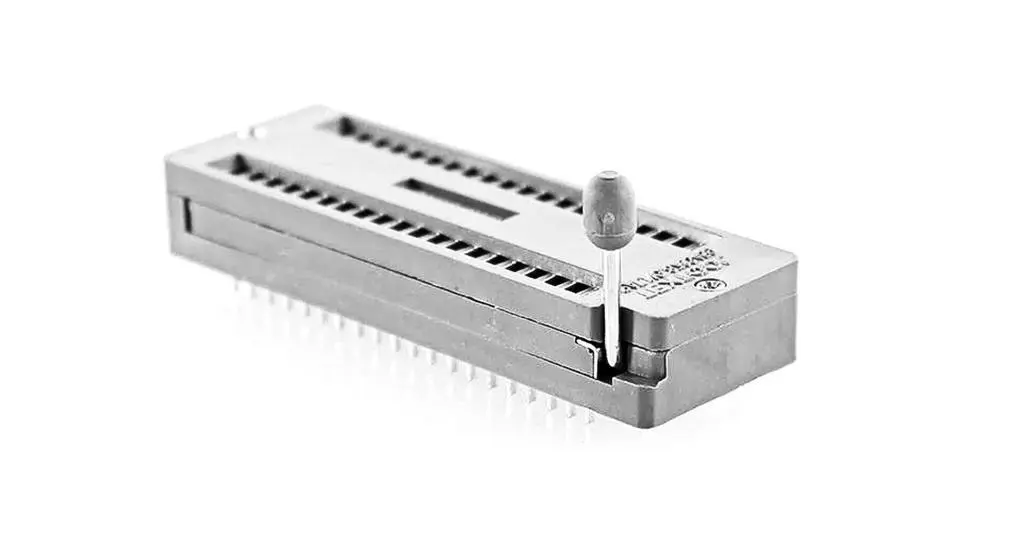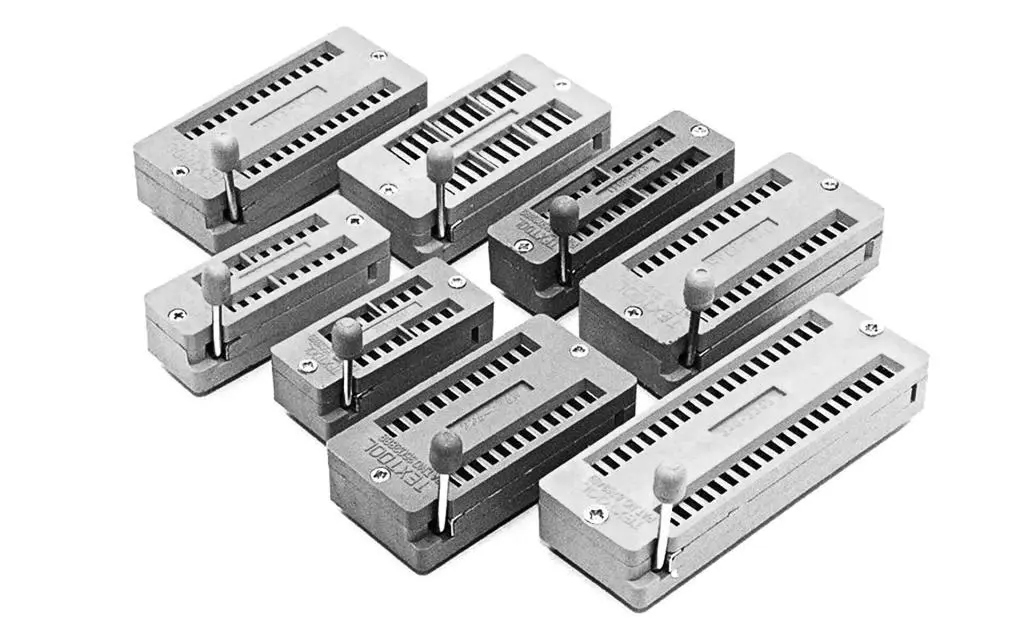A ZIF socket, shorthand for Zero Insertion Force socket, is a type of integrated circuit (IC) socket designed to allow chip insertion without exerting pressure on the chip’s pins, minimizing potential damage and ensuring safe handling.

What is ZIF Socket: Table of Contents
In the intricate tapestry of electronics, there lies a component with a name as technical as it sounds, yet as simple in purpose: the ZIF socket. ZIF” stands for Zero Insertion Force, a term that might initially sound more at home in a physics class than a music studio. At its core, a ZIF socket is a specialized mount designed for integrated circuits or chips. Its key feature? The ability to insert or remove these chips without applying any physical force, ensuring the delicate pins on these chips remain undamaged.
Now, you might wonder, how does this piece of technology pertain to the world of music? As we transition into an era where the lines between traditional music creation and technology blur, the demand for crisp, clear, and customizable sounds becomes paramount. Here’s where the relevance of the ZIF socket magnifies. Instruments, synthesizers, sound mixers, and other music equipment often rely on chips to process and modify sound. The ZIF socket ensures that these essential chips can be switched or replaced with ease, without the fear of damaging them.
What Exactly Does “Zero Insertion Force” Mean?
We’ve all felt that trepidation when plugging in a device or component — the fear of applying too much pressure, possibly causing irreversible damage. This concern is magnified a hundredfold when handling the intricate pins of integrated circuits. Enter the concept of “Zero Insertion Force” or ZIF.
In essence, “Zero Insertion Force” revolves around the idea that one can insert or plug in a component, specifically an integrated circuit chip, into its socket without having to exert any physical force. This might sound like magic, but it’s a thoughtful, scientific design meant to preserve the longevity and functionality of these delicate chips.
Now, let’s draw a comparison. Traditional sockets, which many of us might have encountered, often require a careful yet firm push to ensure that the component sits securely. However, this action carries the inherent risk of bending or breaking the chip’s sensitive pins. The ZIF socket, on the other hand, entirely eliminates this need for force. It’s akin to the difference between manually pushing a car door closed versus it automatically, and gently, shutting on its own.
Why is a Lever Mechanism Essential?
At the heart of a ZIF socket’s genius is its lever mechanism. But why is this seemingly simple lever so revolutionary?
The lever in a ZIF socket acts as a guardian. When in its open position, the socket’s interior is designed to easily accommodate the chip without any friction against the pins. As you close the lever, it engages the internal components of the socket to grip onto the chip, securing it in place without any force being directly applied to the chip itself. It’s a bit like the latch of a jewelry box, allowing you to place your precious items inside without worry and then securing them safely without any pressure.
Now, when it comes to chip insertion and removal, the process becomes almost poetic in its simplicity. To insert, you open the lever, place the chip within the socket ensuring the pins align with the requisite slots, and then close the lever. To remove, you’d do the opposite: open the lever and effortlessly lift the chip out. Gone are the days of fumbling, nervous adjustments, and the anxiety of potential damage. The lever mechanism ensures that the procedure remains straightforward, smooth, and, most importantly, safe for the chip.
What Makes ZIF Sockets Stand Out?
The musical realm is an orchestra of harmony and disharmony, of experimentation and tradition. In this symphony of sounds, every component, no matter how small, plays its part. ZIF sockets might not be the loudest instrument in this orchestra, but their presence is undeniably impactful.
One of the primary benefits of ZIF sockets in the music tech world is the protection they offer. IC chips are the unsung heroes of many audio devices, housing algorithms and circuits that shape the sound. These chips, with their intricate pins, are vulnerable to damage during insertion or removal. ZIF sockets, with their “Zero Insertion Force” design, ensure that these chips remain undamaged, preserving the quality and fidelity of the sound.
Ease of use is another feather in the cap of ZIF sockets. For both seasoned professionals and newcomers, the simple lever mechanism eliminates the guesswork and anxiety associated with inserting chips. No more fumbling, no more second-guessing – just a straightforward insertion process.
Lastly, the adaptability of ZIF sockets cannot be overstated. In a field as dynamic as music, where trends shift like desert sands, having the ability to easily swap out IC chips allows studios and artists to stay at the forefront of innovation. This adaptability ensures that the equipment remains relevant and versatile, catering to a spectrum of sonic needs.

Are There Any Drawbacks to Using ZIF Sockets?
While ZIF sockets offer a medley of benefits, it’s essential to address the other side of the vinyl record. One of the primary concerns associated with ZIF sockets is the cost. These sockets, with their specialized design and mechanism, tend to be more expensive than traditional counterparts. For independent artists or smaller studios operating on tight budgets, this cost can be a factor worth considering.
Another potential drawback is their physical size. ZIF sockets, owing to their lever mechanism and protective design, might be bulkier than standard sockets. In setups where space is at a premium, integrating ZIF sockets might require some logistical juggling.
However, when weighing these concerns, one must consider the bigger picture. The slightly higher upfront cost of a ZIF socket could potentially prevent much more expensive repairs or replacements in the event of a damaged IC chip. Similarly, the space concern, while valid, is a small trade-off for the peace of mind and flexibility these sockets offer.

